02.02.2022
Can cats eat yoghurt? Untamed has the definitive answer
Cats’ curiosity is the stuff of legend, and they are generally willing to try any new food you give them.
Whatever your cat’s preference for daily nutrition—be it wet, semi-moist, dry, BARF, or raw food—you will probably be pestered for treats to complement their regular diet.
If yoghurt is part of your usual breakfast routine, your cat might want to join you and will signal this with headbutting for a piece of the action. Before incorporating any ingredient in a tailor-made diet for your kitty, you should know what is safe and what cats cannot eat.
Can cats eat yoghurt, or is it inadvisable to supplement your cat’s regular food with any dairy products? Untamed has the answers!

“Want more yoghurt! Want more yoghurt! Want more…(repeat as often as necessary)”
Source: Pixabay
What could be the benefits of eating yoghurt?
Yoghurt has many nutritional benefits for humans, and the best known are:
- A high protein content
- Probiotic bacteria
- Calcium boost
- Various vitamins and minerals
Although most evidence is anecdotal, many cat parents advocate using yoghurt to give their felines a health boost, claiming the following benefits:
- Improved digestion
- Reduced susceptibility to allergies
- Strengthened immune system
Improved digestion
The probiotics in yoghurt should aid in keeping cats‘ digestive systems healthy.
Cats have relatively short and acidic digestive tracts. Maintaining a balance between good bacteria—lactobacilli and Bifidus, for example—and harmful pathogens, such as E. coli and salmonella, is crucial to avoid diarrhoea and other gastrointestinal problems.
Reduced susceptibility to allergies
The science behind this claim is unclear, but proponents of feeding yoghurt to cats claim it can reduce their susceptibility to allergies.
Allergic reactions can come in many guises, but the most common in cats are:
- Food allergies
- Allergic reactions to pollen, dust, or airborne irritants
Food allergies occur when a cat’s body mistakes a protein for a harmful invader and mounts an immune response. The symptoms are usually patches of inflamed skin, causing the cat to lick the spot incessantly, often making the problem worse.
While the science behind yoghurt reducing allergic reactions is dubious, yoghurt may help reduce shedding and overgrooming due to skin irritations.
Strengthened immune system
The whole idea of „strengthening” the immune system is based on increasing a cat’s intake of essential vitamins and minerals, most importantly:
- Vitamin B2, B12, and D
- Potassium
- Zinc
Yoghurt contains high levels of B-complex vitamins and potassium and may boost your cat’s immune system.

Sauce for the gander.
Source: Pixabay
Is it ok for cats to eat yoghurt?
While some cat parents are all for yoghurt as a healthy treat for their kitties, you should be aware of the potential dangers of any milk-based product for cats.
Kittens get their required nutrition from their mother’s milk initially and can safely digest food containing lactose.
As they transition to eating normal food, they gradually stop producing the enzyme they need to metabolise lactose. Adult cats are lactose intolerant, and eating any dairy food can cause serious issues.
While your cat’s natural curiosity can lead to the occasional lick of yoghurt, the consequences can be dire, including:
Vomiting, diarrhoea, and stomach cramps
The most common signs of lactose intolerance are tummy issues, including nausea or diarrhoea.
If your cat is generally fussy or sensitive, you may be used to the occasional bout of stomach trouble, but prolonged gastro problems can have long-term consequences.
When your cat is feeling unwell, you may notice a reluctance to eat. More than 24 hours of anorexia can lead to rapid weight loss, carrying the risk of hepatic lipidosis.
Hepatic lipidosis occurs when a cat’s body converts fat reserves into energy, flooding the liver with fatty cells. Unable to cope, the liver will store the fat cells around its surface, significantly reducing organ function.
Hepatic lipidosis can be treated, but it may take up to eight weeks of careful medication and dietary control to restore your cat’s liver function to normal.
Any form of lactose can trigger a stomach upset, including:

“I do count the calories. And I can count to a million!”
Source: Pixabay
Weight problems
Many yoghurts contain excessive amounts of sugar or artificial sweeteners.
These pose a two-fold risk, the more obvious of which is the high calorie content of sugar.
Sugar is a simple carbohydrate that provides fast-burn energy for short, intense bursts of activity. The issues occur when your cat eats sugar but doesn’t release the energy immediately. Excess carbohydrates are stored for later use as fat cells. Too many carbs in your cat’s diet can quickly lead to obesity.
While you may be happy with a Garfield lying around your home, being overweight can have serious knock-on effects for your feline, including:
- Joint and mobility problems
- Tooth decay, gingivitis, and dental deterioration
- Diabetes and pancreatitis
Diabetes and pancreatitis
Any yoghurt with a high sugar or sweetener content can lead to long-term health issues such as diabetes or pancreatitis.
Your cat’s pancreas releases insulin to control blood sugar levels. Regularly flooding the bloodstream with the sugar in yoghurt puts intolerable pressure on the pancreas, causing the organ to lose efficiency over time.
The result is diabetes, pancreatitis, or both. If left untreated, either condition can prove fatal to felines.
While you can treat both illnesses, the best cure is to avoid damaging the pancreas in the first place—avoiding products with a high carb content is the best way to achieve this.
Toxic reactions
Some yoghurts contain substances that are toxic to cats.
Even though cats are easily tempted to take a nibble of any food left lying around the house, certain foods should be avoided at all costs.
The most common no-no ingredients in yoghurt are fruits, so you should avoid feeding your cat any yoghurt that contains:
- Grapes or raisins
- Citrus fruits
- Most berries
Even though your cat may benefit from some nutrients in yoghurt, the risks outweigh the potential upsides.
Are there any other foods cats should avoid?
There is a long list of foods that are toxic to cats. You should not allow your feline to eat or drink:
- Garlic, onions, or chives
- Coconut flesh or milk
- Chocolate or cocoa-based products
- Coffee or any other natural stimulant
- Alcohol
- Most human spices
If you want to avoid curiosity killing your cat, here are some tips to follow:
- Clear away all food from the kitchen
- Make sure human treats are not left lying around after you have binge-watched the latest season of Strictly
- Keep work surfaces in the kitchen clean
- Find places to store food that even a cat cannot reach or open
Your cat may even be tempted to nibble on household greenery or the grass outside, but some plants are also toxic to cats, namely:
- Azalea
- Easter lilies, tiger lilies, and daylilies
- Croton (Joseph's Coat)
- Narcissus daffodils
- Caladium
- Dieffenbachia
- Rubber plants
- Weeping fig plants
- Philodendron
- Swiss cheese plant
- Oleander
- Poinsettia
- Christmas Cherry
- Holly berries (be careful around Christmas!)
Avoid keeping these plants in your house. Placing them in spots that seem difficult to reach won’t do the trick because inaccessibility often entices cats. You may end up with a sick cat and tornado-like damage in your living room.
What should cats eat if not yoghurt and dairy products?
Cats are obligate carnivores, so feeding your cat a healthy diet is not difficult as long as you stick to a few basic rules.
To best accommodate their nutritional needs, ensure their meals consist of:
- Meat protein
- Animal fat
- Essential vitamins and minerals
Animal protein vs. dairy protein
Protein is made up of combinations of amino acids (like taurine) that your cat requires to:
- Build muscle
- Keep the skin and coat healthy
- Maintain organ function
Cats can extract protein from most foods, including yoghurt and dairy products, but their bodies have evolved to process meat more efficiently than other sources. Another problem might be casein, a specific milk protein that can provoke allergic reactions in cats.
If your cat food of choice has enough meat, you will notice the following:
- Your cat will look sleeker and shinier
- Required feeding amounts will be lower
- Digestive problems should be infrequent
The best meat sources commonly found in cat food have a high biological value (BV)—this measures how much of the protein a cat can metabolise and how much will be needed to cover their nutritional requirements.
The BVs of the most popular protein sources in cat food are as follows:
|
Protein source |
Biological value |
|
98% |
|
|
94% |
|
87% |
|
|
68% |
|
Below 65% |
You should aim to feed a diet primarily made up of a protein source with a BV of 90% or more.
High levels of animal protein in the diet also contribute to:
- Urinary tract health, including the prevention of cystitis and bladder stones
- Digestive tract stability, with fewer cases of irritable bowel syndrome (IBS) and diarrhoea
- Fewer problems with hairballs

Protein is the key to healthy cat nutrition.
Image (c) Untamed
Animal fat vs. fat in dairy
Fat delivers healthy, slow-burn energy and provides essential fatty acids. It can also make the meal taste delicious without the high risk of extra pounds on your cat’s figure.
Fatty acids keep the organs functioning properly and help with the absorption of specific vitamins. Animal fat can also help with appetite regulation.
Fat from milk, yoghurt, and other dairy products will not help with the taste of your cat’s food. Combined with sugar, it can only lead to unhealthy weight gain and poor digestion.
Essential vitamins and minerals
Cats need vitamins A, B complex, D, and E in their diet.
Meat-based cat food should provide adequate amounts, and the best sources are:
|
Vitamin type |
Sources |
|
Vitamin A |
|
|
Vitamin B complex |
|
|
Vitamin D |
|
|
Vitamin E |
|
Most essential minerals—such as zinc, potassium, magnesium, and calcium—can also be found in meat-based diets, and supplementing them with anything like yoghurt isn’t usually necessary. To save your kitty from indigestion and stomach upsets caused by most dairy products, opt for meat and organs as the source of micronutrients.
What does Untamed do for your cat?
Going Untamed is the best you can do for your feline, combining nutritional excellence with a taste your kitty will go wild for.
All our recipes are formulated according to the following principles:
- Large amounts of real meat
- Vet-formulated recipes
- Human-grade ingredients
High amounts of real meat
Untamed cat food contains up to twice the amount of animal protein that you find in most commercial products and are completely grain-free.
Whether you choose our meals enriched with cat jelly or cat gravy, you can be sure that we respect your cat’s natural diet. Our products are free from any known allergens, so sensitive felines shouldn't have any problems with them.
Vet-formulated recipes
Untamed meals are inspired by homemade cooking but have been further developed in collaboration with vets to make sure they keep your cat healthy and happy.
Whether you have a Maine Coon kitten, a British Shorthair of advanced age that doesn’t want to eat, or a fussy Persian or Siamese with a taste for raw chicken and eggs, Untamed is the best way to ensure they get the tailor-made nutrition they need in a tasty package.
Human-grade ingredients
All Untamed ingredients are passed fit for human consumption, so your feline won’t have to eat iffy meat derivatives, vegetable fillers, or useless grains.
We also care about our planet.
Our ingredients are ethically sourced from sustainable and cruelty-free providers, and our packaging is 100% recyclable. Most importantly, our dishes are delicious, and your cat will love them. Try Untamed now and see the effect for yourself!
How can you get Untamed?

“Who needs yoghurt when I’ve got Untamed?”
Image (c) Untamed
Giving Untamed a try is easy—you need to drop by our online cat food store and do this:
- Tell us about your cat
- Review your feline’s meal plan
- Order a trial pack of Untamed
Your trial pack will land on your doorstep, and your kitty can start testing our delicacies. We offer monthly home delivery of cat food for no extra shipping charges, and you can make changes to your order whenever you like.
Once you switch to Untamed, you will notice the following benefits:
- After week one—There’ll be less mess in the litter tray, and your cat should have seamless digestion
- After two months—Your cat will become leaner and more muscular as a result of the high protein content in our food
- Within four months—Your feline’s coat will look sleek and shiny, and hairballs should decrease
- Life-long—Your kitty should stay playful and full of energy, with natural weight control and no need for (or interest in) supplements like yoghurt
How can you tell if cat food is good?
All the information you need to check the quality of cat food is on the label, provided you know how to decipher it.
The three key elements of cat food labels are the:
- Product description
- Ingredients list
- Guaranteed analysis
Product description
Most cat food products will tell you what flavour they are, but the description can reveal a lot about the quality of the product.
Food labelling legislation stipulates that the following rules apply to product names:
|
Flavour designation |
Percentage of the named meat in the product |
|
“flavoured with” |
Up to 4% |
|
“with” |
Between 4 and 14% |
|
“rich in” |
More than 14 but less than 26% |
|
“xxx,” such as Untamed Chocka Chicken |
Over 26% |
You should look for a product with as high a meat content as possible.
Ingredients list
The ingredients have to be listed in descending order by volume, but food manufacturers can employ certain tricks to hide the true nature of their product.
While many manufacturers list meat as the first ingredient, you should be careful of the following ruses:
- Ingredient splitting—Manufacturers often split cereal ingredients by form, such as corn meal, corn gluten, and ground yellow corn. These are all one ingredient, but splitting them allows meat to retain its place at the top of the ingredients list
- Vague definitions—Any product listing “meat derivatives” should be avoided. Meat derivatives can include any part of an animal unfit for human consumption. Using such ingredients lowers production costs significantly but also affects the quality of the food
- Unintelligible scientific names—If an ingredients list contains substances you don’t recognise or can’t pronounce, steer clear. Manufacturers who use additives often do so because the basic ingredients are not high enough in quality to cover your cat’s nutritional requirements
Guaranteed analysis
The guaranteed analysis tells you what percentage of each major nutrient group is in the product.
By law, manufacturers have to list:
- Protein
- Fat
- Carbohydrates
- Moisture
You can compare each percentage with the ingredients list to check the quality of cat food. If the guaranteed analysis claims 30% protein and the first ingredient of a short, clear list is chicken, you can rest assured that the product contains a high percentage of meat.
The ideal values to look for in cat food are:
|
Nutrient type |
Ideal percentage |
|
Protein |
More than 50% |
|
Fat |
Up to 20% |
|
Carbs/fibre |
Maximum 3% |

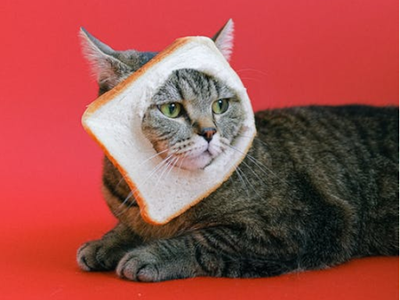
![Associated image for Best food for Ragdoll cats in the UK [Broken Down]](http://untamed.com/cdn/shop/articles/featured_best_food_for_ragdoll_cats_uk_400x300_crop_center.jpg?v=1646818249)
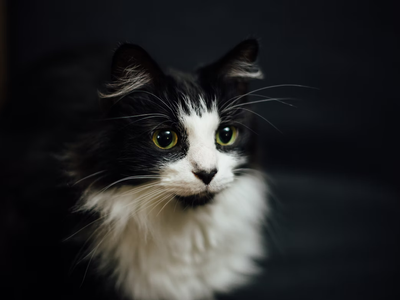
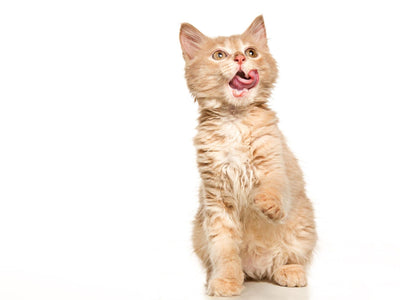

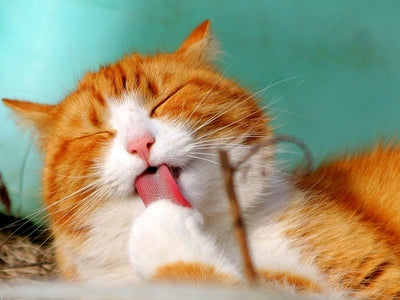
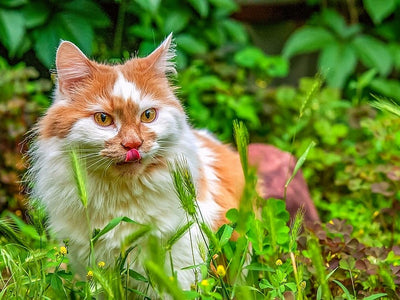

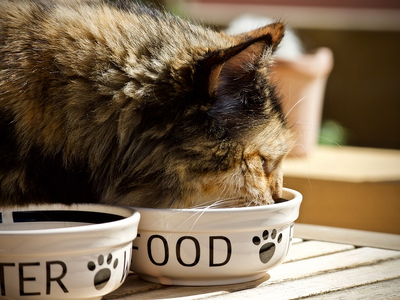
![Associated image for What human food can Sphynx cats eat? [Comprehensive list]](http://untamed.com/cdn/shop/articles/what_human_food_can_sphynx_cats_eat_Featured_400x300_crop_center.jpg?v=1648705074)

